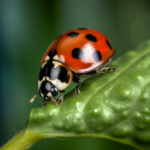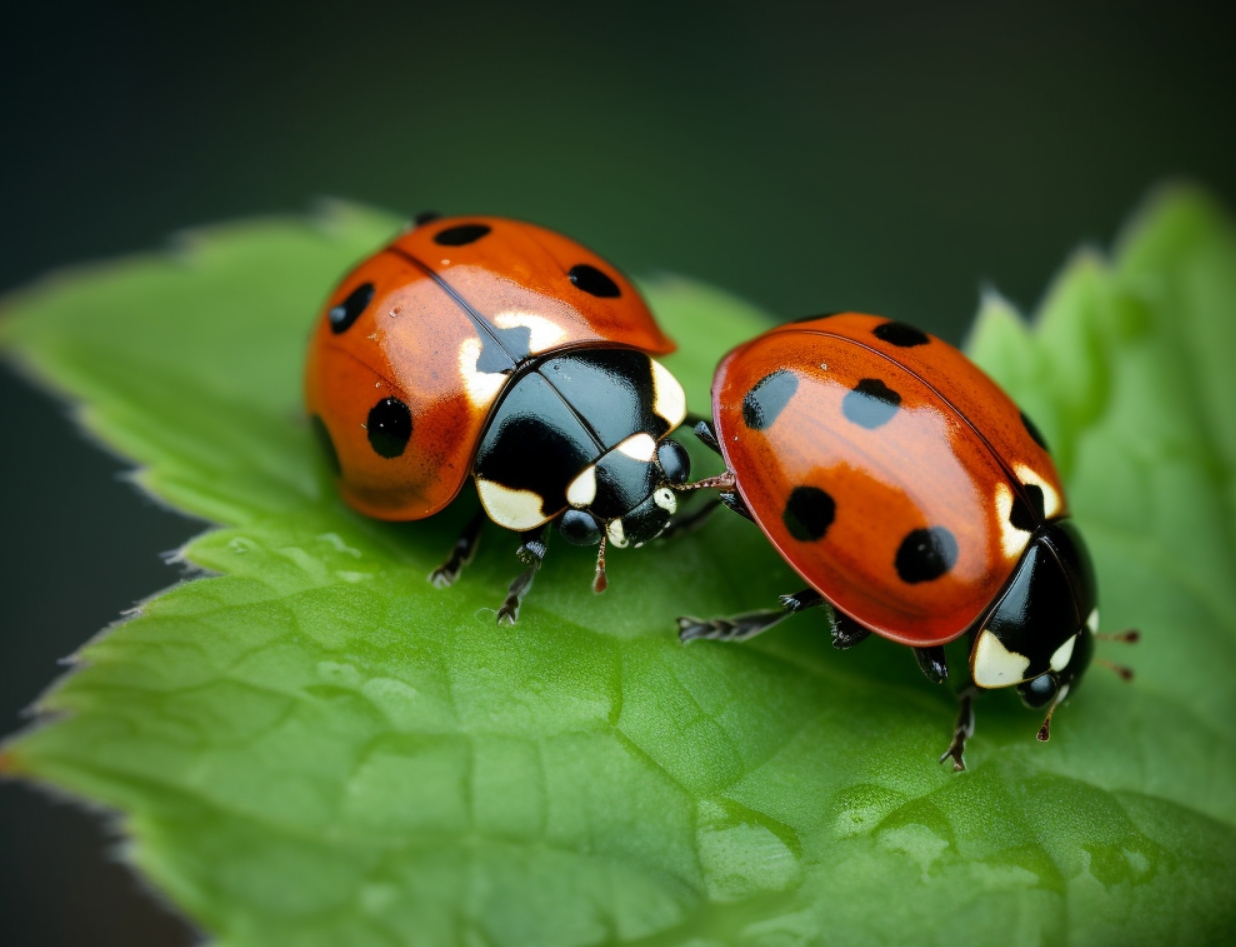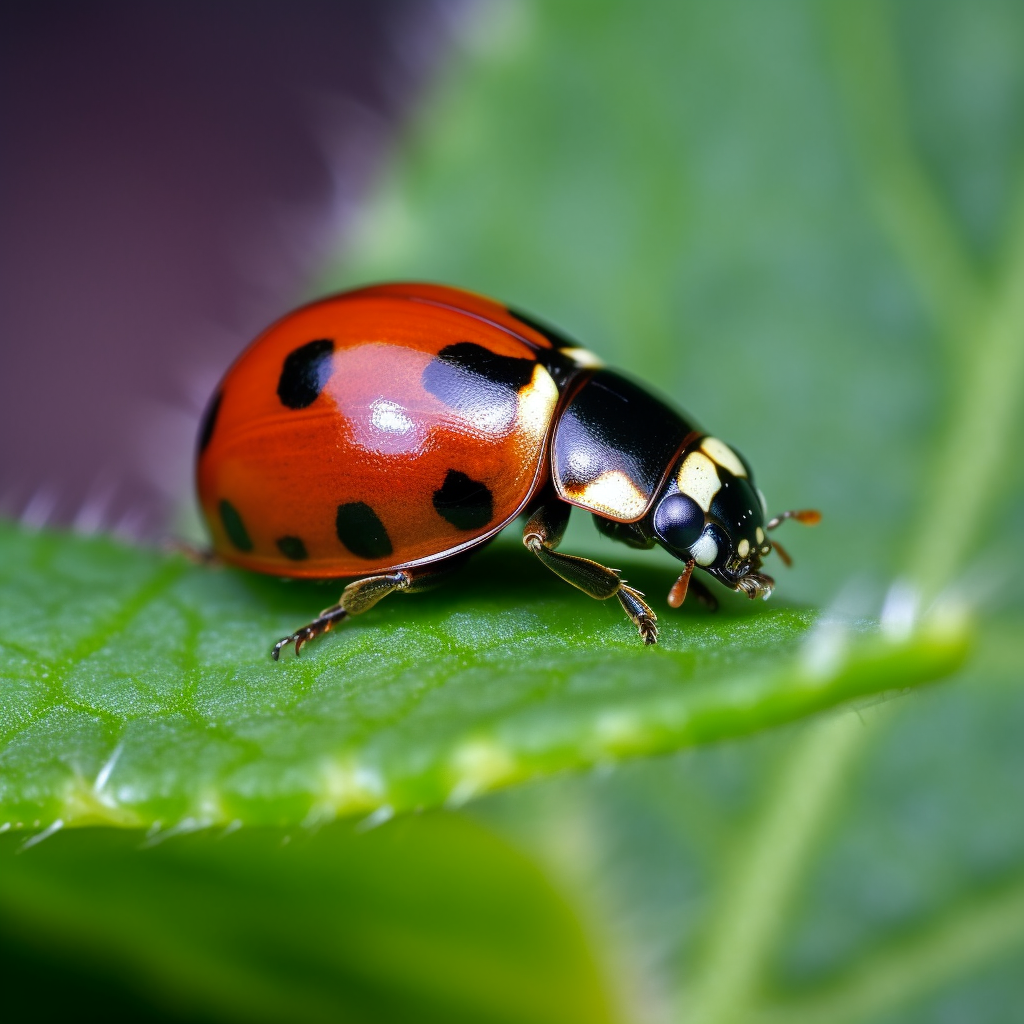Have you ever wondered how those lovely little creatures, ladybugs, manage to thrive in a world filled with predators and threats? In this comprehensive guide, we’ll explore how ladybugs protect themselves and the various strategies they employ to stay safe. With their vibrant colors and small size, ladybugs have become symbols of luck and beauty, but their survival skills are nothing short of impressive.
The Art of Camouflage: Ladybugs’ First Line of Defense
Contents
Ladybugs, like many other insects, rely on their bright colors and patterns to avoid becoming a meal for predators. Their iconic red and black coloration is actually a form of aposematism, a defense mechanism that makes them visually unappealing to potential predators. This conspicuous coloration serves as a warning signal to predators that they’re toxic or distasteful, making them less likely to be attacked.
But that’s not all! Some ladybugs have the ability to blend in with their environment by changing their colors, which is known as cryptic coloration. This makes them less noticeable to predators, allowing them to go about their business without attracting unwanted attention.
Chemical Warfare: Ladybugs’ Secret Weapon
Ladybugs are equipped with an arsenal of chemical defenses that they use to deter predators. When threatened, they release a foul-smelling substance called hemolymph from their leg joints. This yellow, odorous liquid not only smells terrible but also tastes bad, discouraging predators like birds and frogs from eating them.
Additionally, some ladybug species can secrete alkaloids, which are toxic compounds that can cause vomiting, paralysis, or even death in predators. This combination of chemical defenses makes ladybugs a less-than-appetizing meal for most predators.
Playing Dead: Ladybugs’ Ultimate Survival Trick
When faced with danger, some ladybugs have been known to employ a tactic called thanatosis, which is essentially playing dead. When threatened, they’ll fall to the ground and fold their legs beneath their bodies, appearing lifeless. This clever trick can help them avoid becoming a meal, as many predators are only interested in live prey. Once the danger has passed, they’ll simply “come back to life” and carry on with their day.
Do Ladybugs Bite? Debunking Myths About Ladybug Defenses
There is a common misconception that ladybugs bite humans in self-defense. However, this is not true for most species of ladybugs. Although their mandibles are strong enough to pierce the skin of their prey, such as aphids, they are not capable of causing any harm to humans. So, if you’ve ever wondered, “do ladybugs bite?”, the answer is generally no.
That being said, there are some species of lady beetles, such as the Asian Lady Beetle, that can bite humans when they feel threatened. These bites are usually mild and rarely cause any serious harm.
Ladybugs’ Diet: Can They Eat Ants?
Ladybugs are known for their voracious appetite for aphids, making them popular natural pest control agents for gardeners. But many people wonder, “do ladybugs eat ants?”
While ants are not their preferred food source, ladybugs have been known to eat ants occasionally. However, this behavior is relatively rare, and typically occurs when their preferred prey, such as aphids, are scarce. Ladybugs are opportunistic feeders and may consume other soft-bodied insects, mites, and insect eggs when the need arises.
The Role of Ladybugs in Pest Control
Ladybugs play a crucial role in natural pest control, thanks to their insatiable appetite for aphids and other garden pests. A single ladybug can consume up to 5,000 aphids in its lifetime! By doing so, they help maintain a healthy balance in gardens and agricultural ecosystems.
In fact, many gardeners and farmers purchase ladybugs to release in their gardens and fields as a form of organic pest control. Brands like Bug Brigade and Ladybug Lovers offer packages of live ladybugs for this purpose. These beneficial insects can help reduce the need for chemical pesticides, promoting a healthier environment for both plants and people.
How to Attract Ladybugs to Your Garden
If you’re interested in harnessing the power of ladybugs for natural pest control, you’ll want to create a welcoming environment for these helpful insects. Here are some tips to make your garden more attractive to ladybugs:
- Plant flowers with lots of pollen and nectar: Ladybugs need nectar and pollen as a food source, especially during their reproductive season. Planting flowers such as marigolds, daisies, and yarrow can provide an abundant food source for ladybugs, encouraging them to take up residence in your garden.
- Provide a water source: Ladybugs need water to survive, so providing a shallow dish or birdbath with small rocks for them to perch on can help keep them hydrated and encourage them to stay in your garden.
- Avoid using chemical pesticides: Many chemical pesticides can harm ladybugs, so it’s essential to use organic pest control methods if you want to attract and support these beneficial insects.
- Provide shelter: Ladybugs need a safe place to hide from predators and lay their eggs. You can create a ladybug habitat by adding piles of leaves, rocks, or logs to your garden, or even purchasing a ladybug house from brands like Ladybug Lodge.
The Circle of Life: Ladybugs’ Role in the Ecosystem
Ladybugs play an essential role in ecosystems, helping to maintain the balance between plants and herbivorous insects. By preying on pests like aphids, they help prevent these insects from overpopulating and causing widespread damage to plants. In turn, ladybugs provide a valuable food source for larger predators such as birds, lizards, and frogs.
In conclusion, ladybugs are fascinating creatures with a wide range of strategies for protecting themselves from predators. Their bright colors, chemical defenses, and ability to play dead all contribute to their success in the wild. By understanding how ladybugs protect themselves, we can appreciate their essential role in our ecosystems and even learn how to support their populations in our own gardens. So next time you see a ladybug, take a moment to admire its incredible survival skills and appreciate the important role it plays in keeping our world in balance.
FAQs
What do ladybugs do to survive?
Ladybugs employ several strategies to survive in their environment. These include:
- Aposematism: Their bright colors and patterns warn potential predators that they are toxic or distasteful.
- Chemical defenses: They release a foul-smelling and bad-tasting substance called hemolymph when threatened, deterring predators from eating them.
- Thanatosis: They “play dead” by folding their legs beneath their bodies and appearing lifeless to avoid predators.
How does a ladybug survive in its environment?
Ladybugs survive in their environment by adapting to different conditions, finding food sources, and employing various defense mechanisms. They primarily feed on aphids and other soft-bodied insects, helping them control pest populations in gardens and agricultural ecosystems. Their defense mechanisms, such as aposematism and chemical defenses, help protect them from predators and ensure their survival.
Do ladybugs have predators?
Yes, ladybugs have predators. While their bright colors and chemical defenses deter many predators, some still prey on ladybugs. Common predators include birds, frogs, lizards, spiders, and some types of insects. However, ladybugs’ defense mechanisms help reduce their predation and ensure their survival in the wild.
How do ladybugs fight?
Ladybugs are not aggressive insects and generally do not engage in fights. Their primary methods of defense are passive, such as using their bright colors, releasing foul-smelling chemicals, or playing dead. Ladybugs rely on these tactics to deter predators and avoid confrontation rather than actively fighting.


